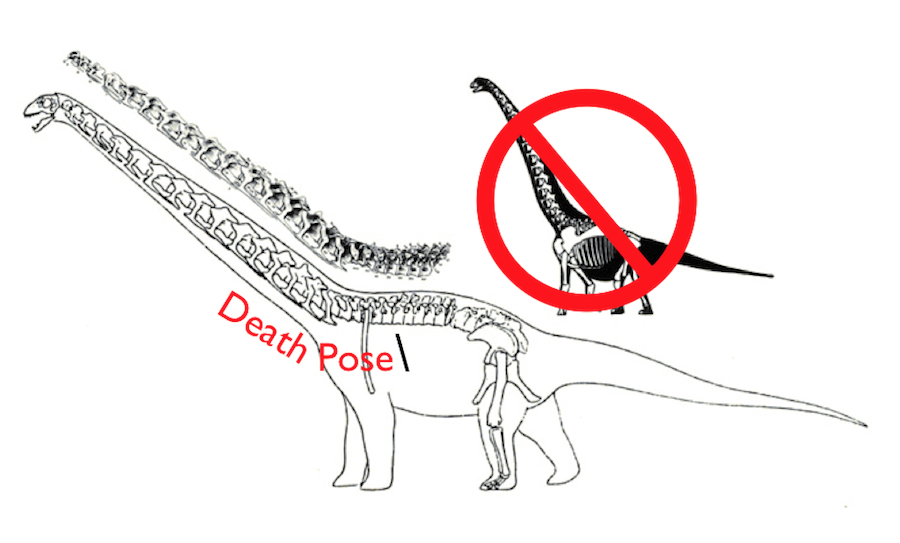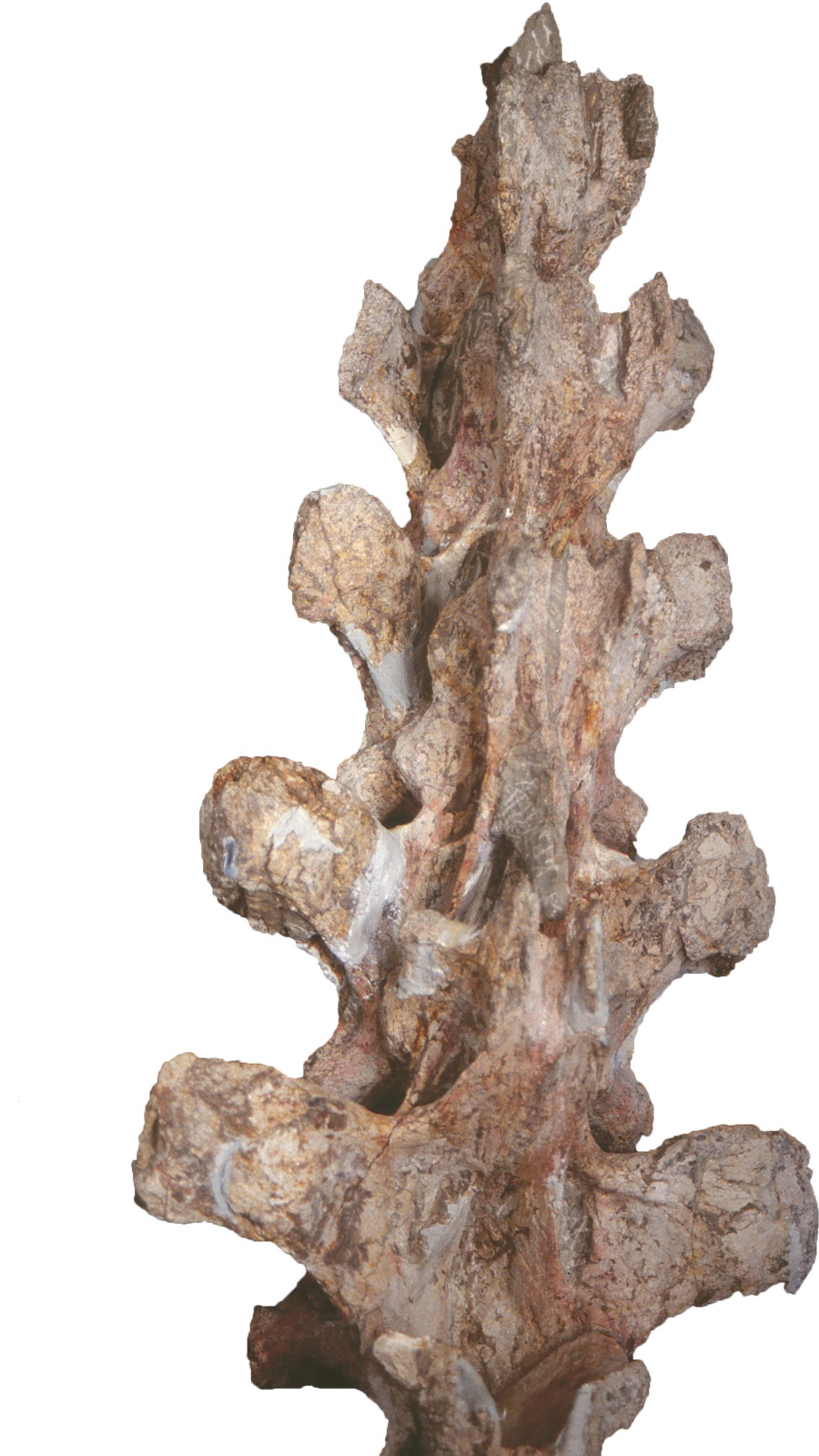


 |
| Wiman (1929, fig. 3) originally reconstructed the Chinese sauropod Euhelopus zdanskyi with a giraffe-like neck, but his life reconstruction (outline drawing above) shows the neck in precisely the same curved pose as the fossil specimen was found in (superimposed and scaled illustration of from Wiman, 1929, pl. 3). That is, Wiman's reconstruction of the living animal does not take into consideration any taphonomic distortion to the natural curve of the vertebral column (we'll get to discussing the more spunky silhouette smaller reconstruction in the upper right momentarily). The cervical series of Euhelopus was straight-as-an-arrow from the atlas way back to the base at C17, but then C17 was taphonomically dorsiflexed out of neutral position relative to the first dorsal, D1, as was D1 to D2. This "death pose" dorsiflexion (wherein desiccation of ligaments causes extreme dorsiflexion). The original specimen shows clear evidence of dorsiflexion through the anterior dorsals as well, with bone-to-bone contact between successive neural arches (the post zygapophyses of each vertebra was found wedged tight against the ascending processes of its more caudal neighbor, see images at bottom of this page). To see what the undeflected neck would have appeared like in life, one needs to account for the dorsiflexion that occurred taphonomically. Note that the degree of dorsiflexion as measured at the zygapophyses matches within the limits of measurement the degree of dorsiflexion at the centra (both between C17 and D1 and between D1 and D2). |
 |
| That means that the curvature in the base of the neck of Euhelopus is due to dorsiflexion; it is not intrinsic to the shape of the neck vertebrae as it is in the giraffe. The osteological evidence for death pose dorsiflexion in Euhelopus is obvious, and readily removed by rotating the vertebrae back into neutral deflection at both zygapophyses and centra, starting from C17 and proceeding caudally, like this: |
 |
| After removing the death pose one realizes that Euhelopus has been very inaccurately reconstructed, from its initial depiction in 1929, and only more so giraffomorphic depictions that increase the slope of the neck from Wiman's 38° to a monumentally priapic 68° (see small silhouette insert above, after McIntosh et al., 1997, fig. 20.9; Paul, 2000, appendix A). The true osteology, without such fanciful interpretation, suggests that Euhelopus as a low browser, like the diplodocids and Manenchisaurus. Sauropods in general, appear to have had less arch to their dorsal columns than for instance Asian elephants, on the basis of a careful examination of the degree to which the dorsal vertebrae are keystoned (longer dorsally than ventrally). Even a modest few degrees of the usual sort of ventral curvature (arch) to the back would have reduced the slope of the neck to horizontal or sub-horizontal, and placed the head of Euhelopus close to ground level, a far cry from the erroneous-yet-familiar giraffe-like posture it has been given. Since the forelimbs and pectoral girdles of this taxon are unknown, its overall posture is uncertain, but there is absolutely no reason to postulate that this sauropod walked around with the base of it neck completely disarticulated in order to emulate a giraffe. Nor is there any reason to expect a giraffe-like neck for Camarasaurus or Brachiosaurus. |
Remember: "... sauropods were not giraffes ... sauropods were not giraffes ...". |
| Additional images follow, courtesy Valérie Martin-Roland. The vertebrae are clearly wedged into a death pose at the base. |
 |
McIntosh, J., M.K. Brett-Surman and J.O. Farlow. 1997. Sauropods, pp. 264-290 in J.O. Farlow and M.K. Brett-Surman (eds.), The Complete Dinosaur. Indiana University Press. Paul, G. 2000. Restoring the life appearance of dinosaurs, pp. 78-106 in G.S. Paul (ed), The Scientific American Book of Dinosaurs. Bryon Press and Scientific American. New York. Wiman, C. 1929 Die Kriede-dinosaurier aus Shantung. Palaeontologica Sinica (Series C) 6:1-67. |
Copyright © 2011 Kent A. Stevens, University of Oregon